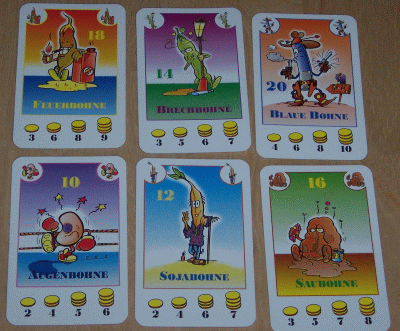Manufacturer: Rio Grande Games
Author: Uwe Rosenberg
Graphics: Marc-Andre Casasola-Merkle
Number of Players: 2-7
Age: 12 years plus
Time: about 45 mins.
Year: 2000 (1997 German version)
Awards:
SdJ 1997: Nominee
DSP 1997: 5th place
ENGLISH MAIN PAGE
 Deutsche
Spielerezension
Deutsche
Spielerezension
